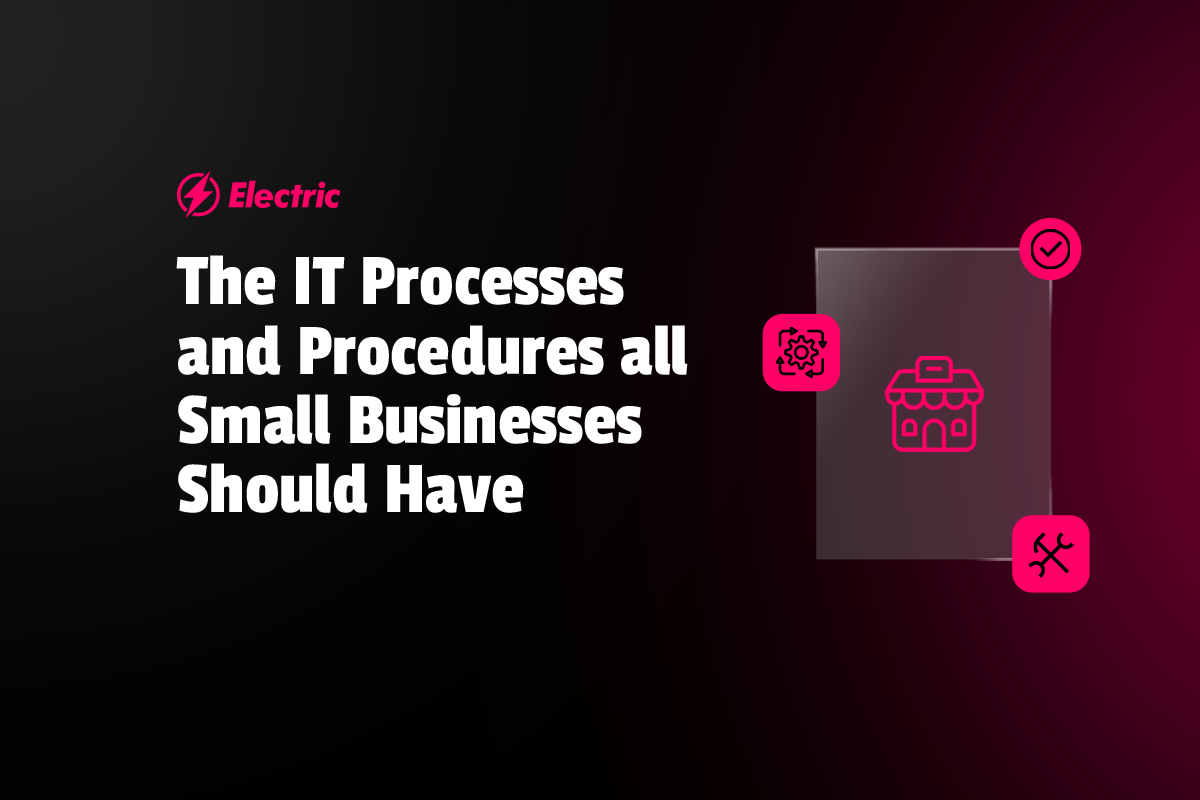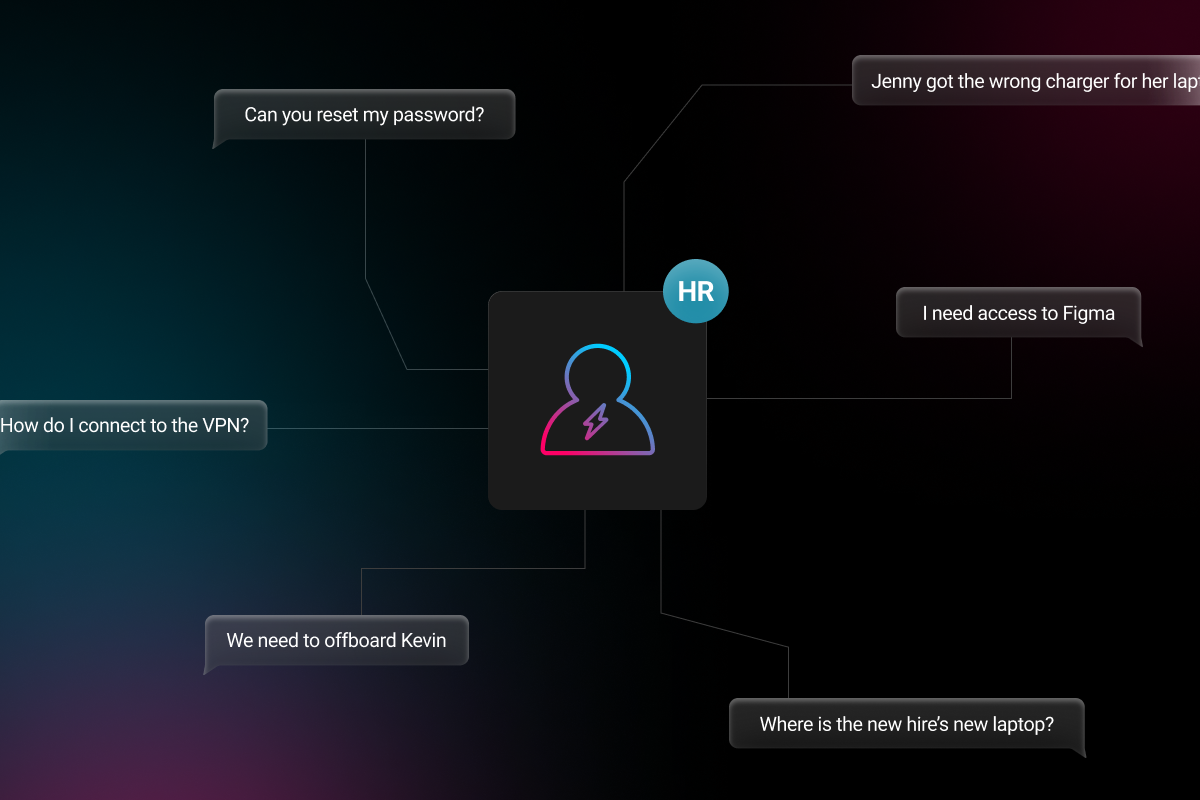
A company’s business operations can be streamlined by establishing and following a set of IT processes, procedures, and policies. These processes help develop consistency in your business’s day-to-day operations. Management teams can also use these IT processes and procedures to provide organizational guidance without excessive involvement in decision-making at every step. When drafted and maintained appropriately, such policies ensure that your IT activities are consistently and efficiently conducted.
However, your organization’s IT processes, procedures, and policies should be implemented in a dynamic environment since they remain susceptible to change. If not regularly updated, they may become outdated and inconsistent with their objectives, and may derail your business operations.
What are IT Infrastructure Processes?
IT infrastructure entails the physical hardware supporting your IT systems, networks, and storage requirements for efficient IT service delivery. A team of IT infrastructure specialists should manage these IT infrastructure processes. The roles of these specialists range from maintaining mainframes, managing system security, and supervising network switches to installing new hardware, tracking assets, and configuring servers.
In some cases, IT infrastructure is housed in a data center within the business premises where IT infrastructure teams can manage power and cooling. However, modern infrastructure can also be housed in third-party or virtual IT locations through a cloud provider.
As such, IT infrastructure processes tend to focus primarily on integrating IT assets and maintaining data security across these environments.
What are IT Operations Management Processes?
Besides IT Infrastructure, IT teams are also responsible for all IT applications, platforms, and processes. This responsibility entails system configuration, software maintenance, downtime prevention, database management, and disaster recovery. They’re also responsible for the implementation or integration of new software. The same IT operations processes also enable you to manage your devices and help desks to improve your business needs.
IT operations management often goes hand in hand with the information technology infrastructure library (ITIL). ITIL is a framework that supports IT services and best practices.
What is an IT Governance Processes Framework?
IT governance is a type of formal framework. It helps you ensure that your IT investments add value to your business objectives. Ideally, IT governance processes help provide a structure that aligns your IT strategy with your overall business strategy.
When your company follows a formal IT governance framework, it stands to produce tangible results for achieving your long-term strategies and goals. A standard policy or procedure also ensures that stakeholders’ interests and the needs of your employees are taken into account. In other words, IT governance is an integral part of your organization’s overall governance.
Why are IT Processes and Procedures Important for Small Businesses?
When you’re still in the early stages of establishing your company, or if you’re trying to grow an underperforming business, developing IT processes, procedures, and policies is critical whether you’re handling in-house or outsourcing your IT. These processes and standards are necessary for staff training, performance reviews, and induction programs, to name just a few use cases. Here’s why these standards are essential:
IT processes and procedures: Your business stands to save a lot of time and money, and increase efficiency through formalized IT processes. Your staff can achieve more targets in less time by following the required methods and procedures. You can also spend less time supervising the daily operations within your company. Additionally, having carefully formulated IT processes and procedures can enable your staff to improve service delivery consistently.
Standards and policies: When you draft out formalized standards and procedures for your company, you establish specific benchmarks for your staff to meet. For example, you may have particular policies in place surrounding how employees use company devices outside of work, or whether they are permitted to bring their own devices (BYOD) to work. By standardizing expectations, employees feel more confident in their roles, and your business can ensure greater security across company devices.
Standardizing essential business activities: You must create procedures and standards for your most vital business activities. Depending on your business goals, these activities may include:
- Customer services such as customer service programs or after-sales services
- Sales best practices and policies, including warranties and refunds
- Marketing and promotion, including digital marketing
- Staff training, orientation, and performance appraisal
- Energy efficiency and considerations for the environment
- Management duties, privacy laws, cash flow management, and record-keeping
- Technology usage, such as rules on staff internet and mobile phone usage
What are the Benefits of Automated IT Processes?
Whether your business is a small startup or a medium-sized enterprise, there are unlimited opportunities to automate critical areas of your operations. For example, when you automate your business’s IT processes, you can optimize device management, reduce human errors, and improve productivity. Overall, you stand to boost your bottom line and drive increased profit margins.
Here are a few ways you can use automated IT processes to streamline your business operations, regardless of size:
- Automate the steps involved in employee on and offboarding
- Simplify the provisioning and de-provisioning of devices
- Minimize human error
- Support staff collaboration
- Improve employee satisfaction and productivity
- Enhance cybersecurity
IT Processes and Procedures are Essential for Seamless Business Operations
IT processes and procedures help improve the efficiency of your business operations. To ensure effective implementation of such methods, you first need to conduct a comprehensive review of your business’s existing IT processes and procedures, which will allow you to create a baseline and single out which areas to revise. If you’re ready to implement new IT policies and procedures, or update your existing ones, our specialists can help. Get in touch today and let’s get started.



